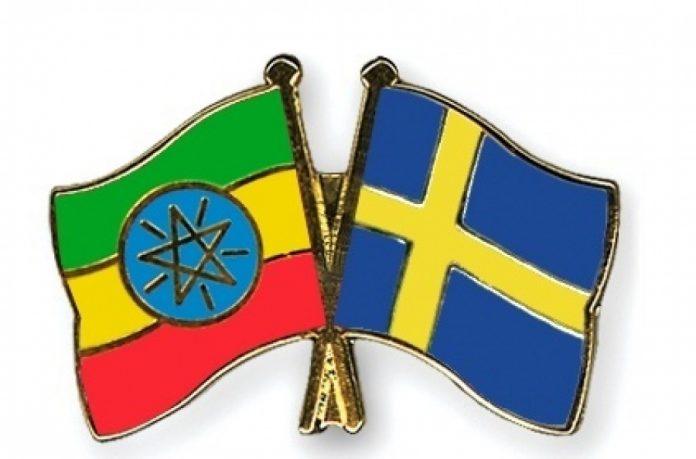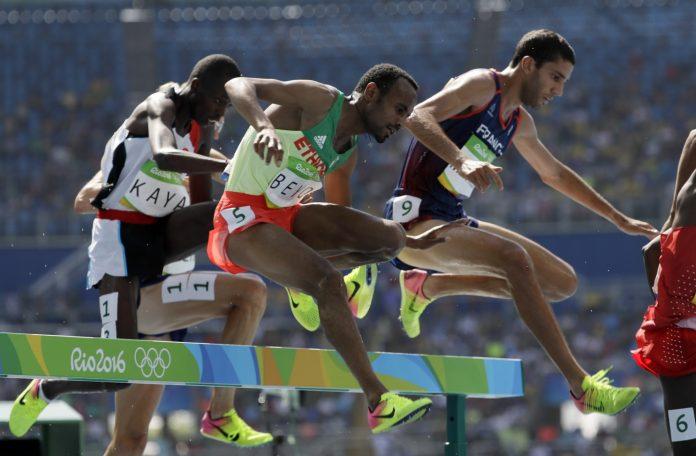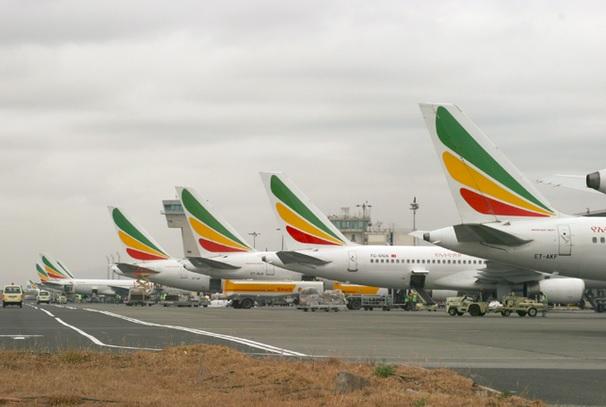Ethiopia: The Dragon’s Quest in Africa
No discussion of the resurgence of China and its relationship with African countries would be complete without a review of the China-Africa policy which began decades ago, and which appeared in at least three phases. This article provides an executive review of the development of the China-Africa policy, and attempts to shed some light on the ongoing controversy that China is simply a twenty-first-century colonizer. The applicability or utility of a totalitarian capitalist system to the African experience is not part of this piece. That requires another article. As a consequence, the aim here is not to provide a slew of policy alternatives—that should be left to policy experts of each country. Rather, the aim is to provide a synopsis of the genesis of the Sino-African development policy along with the conditions and outcomes that ensued. Thus, what follows is a review based upon pre-eminent previous work by others.
The Three Phases of the China-Africa Policy Development:
In 1955, in the city of Bandung, Indonesia, a conference was held giving birth to the first phase of the China-Africa policy. This conference was dubbed the South-South Conference. At this conference, five principles of co-existence were spelled out and agreed to by the participants. These principles were: a) respect for territorial integrity; b) rejection of aggression against other states; c) non-interference in the internal affairs of other countries; d) the principles of equality and mutual benefit; and e) peaceful co-existence. For China itself, the undergirding principle of these factors was their focus on, f) The One-China Policy. This emphasis would become critical in the ensuring development and other forms of cooperation between China and African states. (For a detailed observation and assessment of the policy development phases, please see the pre-eminent work by Asayeghn Desta, 2009)
The Bandung conference would eventually be followed by the Non-aligned Movement in 1961, and gives birth to the following practical outcomes, including, a) the delinking of the South from the advanced countries of the North; b) to pursue collective development; and, c) envisage initiatives for cooperative exchanges of knowledge, skills, resources and technical knowhow. It is worth noting here, that in 1962, China had a record low GDP of merely $47.2b—an amount equal to what Tanzania produced in 2016.
The first phase of the Sino-African policy—prior to the 1970’s, could be rightly categorized as being ideologically driven. If one were to look at relations between China and African countries’ relations, what emerges here is an ideological connection or influence. The situation in Algeria, Angola, Congo, Mozambique, Namibia, South Africa, Rhodesia (Zimbabwe), Guinea, etc. including inter-party relations of ZAPU (Nkomo) and ZANU (Mugabe), the African National Congress (ANC) are all examples of the ideological influences of the Sino-African relations.
The second phase heralded in the 1970’s and 1980’s was a Sino-African relationship that partially got eclipsed because of the cold war. Even during this period, China’s connection to the continent, while quieter, was not completely extinguished. It was during this period that the emergence of China took an urgent and focused tone leading to Deng Xia Ping’s “Economic Transformation” push. Toward the end of this period, China renews its South-South Cooperation referred to since as the “Beijing Consensus” (posing China’s economic development model as an alternative, especially for developing countries—and rejecting the universality of the Washington Consensus.
Phase three of the Sino-African relations policy heralds the emergence of the current China policy regarding the continent and is punctuated by: a) the Beijing Consensus; b) continued South-South dialogue, and c) the formation of the Forum on China-Africa Cooperation or FOCAC.
This third phase heralded the self-acknowledgement by China that the country needed several conditions to be fulfilled if it were to move forward in its push for economic transformation as envisaged in the second phase of this Sino-Africa development trajectory. By its own assessment, China needed:
Resources for its blossoming economy, namely, oil, minerals, timber, and other raw materials
A market for its manufactured goods
Reliable political allies for its “One China Policy”
To accomplish these goals (and satisfy the needs), China saw Africa and began propagating the continent as being rich in: a) culture, b) religion, c) social dynamism, d) energy, and e) as being a great opportunity for business. One needs to contrast this view to that of the West’s, which saw Africa, in most cases and justifiably, as: a) chaotic, b) conflict ridden, c) corrupt, and d) poor in wealth as well as in governance.
As a consequence, and in the main, China began to encourage the following industries to invest in Africa (Asayeghn Desta, 2009):
Processing industrial products in the fields of electronics, machinery making, textiles and garments
Investing in agricultural products in order to add value to Africa’s exports and improve Africa’s terms of trade
Extracting natural resources, including petroleum and high valued minerals
Investing in: infrastructure (such as roads, power plants, dams, oil/gas pipelines, telecommunication and water projects); power supply; and real estate development
A period characterized by Foreign Direct Investment (FDI) made possible by and through: government backed FDI (for example in 2007 alone, 700 firms collaborated with government firms in Africa); preferential finance; tax concessions; and political backing to “go global” (for 2007 alone, 180 companies benefited from these) (Alden and Davies, 2006).
Based on the available evidence, an objective view of this is that the Chinese FDI motive in Africa was, in the main, two pronged: 1) to securing new markets; and 2) to securing raw materials, such as crude oil, iron ore, steel, copper, magnesium, diamonds). There are other objectives as well, namely, 3) raising the efficiency of domestic firms; 4) obtaining cheap labor, securing defensive or offensive strategic advantage; and 6) securing development cooperation (Asayeghn Desta, 2009). It is notable that China’s development cooperation has always been exclusively project based. For instance, these included, giving grant aid (non-payable) to schools, hospitals, housing African Union Headquarters and hotels; interest free loans (for infrastructure projects); and preferential credits (at below market interest rates). It would not be lost in the mind of the reader that infrastructure projects are critical for extracting and transporting energy and mineral resources. In the year 2005 alone, China spent $6.5 billion on 260 projects in 36 countries. That same year, China spent $12.5 billion on preferential credits.
In general, for example, since 2000, Africa’s exports to China have grown over 56%, even if oil and mineral exports accounted for 85% of that growth. In terms of raw numbers, that amounted to: $10.0b; $20.4b; $39.6b; $55.5b; and $100.0b for 2003; 2004; 2005; 2007; and 2010 respectively. China today has the second largest world economy in purchasing power parity at $11.2t. This figure accounts for 18% of the world economy. For comparative purposes (2016 data), the US GDP was $18.57t; the entire Euro area was $11.9t; Japan at $4.94; Germany at $3.47t; and India at $2.27t. In 1962, China had a record low GDP of only $47.2b! China is also on the verge of becoming the second largest trading partner for Africa, if not already, next to the European Union, overcoming the United States. China imports over 40% of its oil, and a third of that comes from Africa (Angola, Saudi Arabia, and Sudan, in that order).
As others have also concluded, these figures show that China does matter in Africa, and that China’s trade and investment will have far more consequential impact than provided by traditional non-Chinese partners. This is partly because the impact of the China boom has been a degree of buoyancy in commodity prices. A major beneficiary of these is Africa in which China’s presence has expanded substantially. One consequence of the rise in the volume and unit value of commodity exports from Africa, are signs of the current reversal of the long-term deterioration of net barter terms of trade faced by developing countries dependent on primary products for their export revenues which in turn finance the imports of manufactured products (C.P. Chandrasekhar, 2008).
What Does All This Mean?
Based upon a review of the existing evidence, an objective observer could conclude, and in summary form, that China’s “state-centric” engagement with Africa is based on the principle of sovereignty and non-interference, and is driven by and to:
Acquire the needed natural resources: energy supply, and export market for a growing economy
Ascertain its belief that its development model is instructive to Africa
Strengthen diplomatic alliances essential to support its global ambitions which are becoming more aggressive. “As China’s economy has skyrocketed in recent decades, it has shored up its efforts in Africa. China has expanded trade and infrastructure projects, increased its commitment to peacekeeping missions and strengthened its military presence on the continent.” (Gaby Galvin, 2017). (The Silk Road initiative, and China’s acquisition of a military base in Djibouti are just two examples).
To facilitate these objectives, China continues to employ a mix of strategies, including:
The use of public diplomacy (FOCAC)
The pledge of large amounts of aid and investments with no political strings attached except “The One China Policy” (withdrawal of diplomatic relations with Taiwan)
The use of aid donations for Chinese companies to acquire African assets as a strategic ground for learning and experience for their companies
The identifiable benefits for the African continent of this Chinese quest includes:
Chinese investments; trade, and assistance in infrastructure helps diversity African exports
Chinese companies usually operate on profit margins of less than 10% (as opposed to 15-25% of local and other foreign companies
As Corkin & Burke (2008) attest, strangely, private sector competition has improved and helped improve African lives (imagine the recently built standard gauge railways in Ethiopia and Kenya)
China makes no value demands, and most African governments are quite happy with that. “Many African governments like to work with the Chinese because it’s traditionally been a strictly business-to-business relationship. There’s been less conditionality in types of support that the Chinese – especially the state-backed companies – [have] offered to governments.” (Gaby Galvin, 2017).
The transfer of significant know how even if African governments are reluctant to embrace laborsaving technologies (as a means of providing employment to the masses of the unemployed) (Asayeghn Desta, 2009).
On balance then, it would be reasonable to conclude that the Chinese involvement and policy towards Africa can be accurately characterized as:
Having contributed to a significant level of economic growth, but
Having very little impact on the broader human development factors in the continent
Is China a Modern-Day-Colonizer?
The alarm about China-Africa relationship mostly comes from Europe and the United States, and is centered mainly on two factors: economic and geopolitical. The question usually asked of Chinese influence in the continent takes the form of a ‘burden’ or of ‘new colonialist’ or ‘friend and benefactor’. While these are questions of both an empirical nature and values oriented, they ignore a very important factor: that the Africans and African institutions should be held accountable for their decisions as well. What is undeniable is this: in 2016, China was, engaged in considerable trade with what I will call the Africa Five (Nigeria, Egypt, South Africa, Morocco, and Sudan, with GDPs of $405b, $336b, $295b, $101b, and $96b, respectively) as it was with the Sub-Sahara Five (Angola, Ethiopia, Kenya, Tanzania, and Ghana, with GDPs of $90b, $72b, $71b, $47b and $43b, respectively).
Arguing against the notion that China is simply another modern-day imperial colonialist, Hannah Ryder (2017), in a Project Syndicate opinion page, proposes three arguments as contrary evidence to the charge. First, unlike the usual methods of colonialism, the Chinese state-owned as well as private companies prefer to do business in African countries that already have formalized ties with China. Second, the Chinese do not avoid countries with governments that champion their own citizens’ interests. Whether these interests are expressed in the form of strong labor laws or stiff requirements of domestic inputs, the Chinese have been willing to accommodate the host government conditions in the projects that they undertake. And finally, third, Chinese investment destinations have focused on maximizing returns, and that implies seeking fast-growing economies in the continent. Investment destinations in countries like Ethiopia, Tanzania, Ghana and Kenya show the complexity of Chinese investment decisions in search of high growth countries; while investments destinations to countries such as Angola, the Democratic Republic of the Congo, and even Zimbabwe and Sudan exhibit a willingness to take economic and political risks as well.
Teshome Abebe, Ph.D., a former Provost and Vice President at two institutions, is University Faculty Laureate, and Professor of Economics; and may be reached at:
[email protected]Ethiopia: The Dragon’s Quest in Africa
No discussion of the resurgence of China and its relationship with African countries would be complete without a review of the China-Africa policy which began decades ago, and which appeared in at least three phases. This article provides an executive review of the development of the China-Africa policy, and attempts to shed some light on the ongoing controversy that China is simply a twenty-first-century colonizer. The applicability or utility of a totalitarian capitalist system to the African experience is not part of this piece. That requires another article. As a consequence, the aim here is not to provide a slew of policy alternatives—that should be left to policy experts of each country. Rather, the aim is to provide a synopsis of the genesis of the Sino-African development policy along with the conditions and outcomes that ensued. Thus, what follows is a review based upon pre-eminent previous work by others.
The Three Phases of the China-Africa Policy Development:
In 1955, in the city of Bandung, Indonesia, a conference was held giving birth to the first phase of the China-Africa policy. This conference was dubbed the South-South Conference. At this conference, five principles of co-existence were spelled out and agreed to by the participants. These principles were: a) respect for territorial integrity; b) rejection of aggression against other states; c) non-interference in the internal affairs of other countries; d) the principles of equality and mutual benefit; and e) peaceful co-existence. For China itself, the undergirding principle of these factors was their focus on, f) The One-China Policy. This emphasis would become critical in the ensuring development and other forms of cooperation between China and African states. (For a detailed observation and assessment of the policy development phases, please see the pre-eminent work by Asayeghn Desta, 2009)
The Bandung conference would eventually be followed by the Non-aligned Movement in 1961, and gives birth to the following practical outcomes, including, a) the delinking of the South from the advanced countries of the North; b) to pursue collective development; and, c) envisage initiatives for cooperative exchanges of knowledge, skills, resources and technical knowhow. It is worth noting here, that in 1962, China had a record low GDP of merely $47.2b—an amount equal to what Tanzania produced in 2016.
The first phase of the Sino-African policy—prior to the 1970’s, could be rightly categorized as being ideologically driven. If one were to look at relations between China and African countries’ relations, what emerges here is an ideological connection or influence. The situation in Algeria, Angola, Congo, Mozambique, Namibia, South Africa, Rhodesia (Zimbabwe), Guinea, etc. including inter-party relations of ZAPU (Nkomo) and ZANU (Mugabe), the African National Congress (ANC) are all examples of the ideological influences of the Sino-African relations.
The second phase heralded in the 1970’s and 1980’s was a Sino-African relationship that partially got eclipsed because of the cold war. Even during this period, China’s connection to the continent, while quieter, was not completely extinguished. It was during this period that the emergence of China took an urgent and focused tone leading to Deng Xia Ping’s “Economic Transformation” push. Toward the end of this period, China renews its South-South Cooperation referred to since as the “Beijing Consensus” (posing China’s economic development model as an alternative, especially for developing countries—and rejecting the universality of the Washington Consensus.
Phase three of the Sino-African relations policy heralds the emergence of the current China policy regarding the continent and is punctuated by: a) the Beijing Consensus; b) continued South-South dialogue, and c) the formation of the Forum on China-Africa Cooperation or FOCAC.
This third phase heralded the self-acknowledgement by China that the country needed several conditions to be fulfilled if it were to move forward in its push for economic transformation as envisaged in the second phase of this Sino-Africa development trajectory. By its own assessment, China needed:
Resources for its blossoming economy, namely, oil, minerals, timber, and other raw materials
A market for its manufactured goods
Reliable political allies for its “One China Policy”
To accomplish these goals (and satisfy the needs), China saw Africa and began propagating the continent as being rich in: a) culture, b) religion, c) social dynamism, d) energy, and e) as being a great opportunity for business. One needs to contrast this view to that of the West’s, which saw Africa, in most cases and justifiably, as: a) chaotic, b) conflict ridden, c) corrupt, and d) poor in wealth as well as in governance.
As a consequence, and in the main, China began to encourage the following industries to invest in Africa (Asayeghn Desta, 2009):
Processing industrial products in the fields of electronics, machinery making, textiles and garments
Investing in agricultural products in order to add value to Africa’s exports and improve Africa’s terms of trade
Extracting natural resources, including petroleum and high valued minerals
Investing in: infrastructure (such as roads, power plants, dams, oil/gas pipelines, telecommunication and water projects); power supply; and real estate development
A period characterized by Foreign Direct Investment (FDI) made possible by and through: government backed FDI (for example in 2007 alone, 700 firms collaborated with government firms in Africa); preferential finance; tax concessions; and political backing to “go global” (for 2007 alone, 180 companies benefited from these) (Alden and Davies, 2006).
Based on the available evidence, an objective view of this is that the Chinese FDI motive in Africa was, in the main, two pronged: 1) to securing new markets; and 2) to securing raw materials, such as crude oil, iron ore, steel, copper, magnesium, diamonds). There are other objectives as well, namely, 3) raising the efficiency of domestic firms; 4) obtaining cheap labor, securing defensive or offensive strategic advantage; and 6) securing development cooperation (Asayeghn Desta, 2009). It is notable that China’s development cooperation has always been exclusively project based. For instance, these included, giving grant aid (non-payable) to schools, hospitals, housing African Union Headquarters and hotels; interest free loans (for infrastructure projects); and preferential credits (at below market interest rates). It would not be lost in the mind of the reader that infrastructure projects are critical for extracting and transporting energy and mineral resources. In the year 2005 alone, China spent $6.5 billion on 260 projects in 36 countries. That same year, China spent $12.5 billion on preferential credits.
In general, for example, since 2000, Africa’s exports to China have grown over 56%, even if oil and mineral exports accounted for 85% of that growth. In terms of raw numbers, that amounted to: $10.0b; $20.4b; $39.6b; $55.5b; and $100.0b for 2003; 2004; 2005; 2007; and 2010 respectively. China today has the second largest world economy in purchasing power parity at $11.2t. This figure accounts for 18% of the world economy. For comparative purposes (2016 data), the US GDP was $18.57t; the entire Euro area was $11.9t; Japan at $4.94; Germany at $3.47t; and India at $2.27t. In 1962, China had a record low GDP of only $47.2b! China is also on the verge of becoming the second largest trading partner for Africa, if not already, next to the European Union, overcoming the United States. China imports over 40% of its oil, and a third of that comes from Africa (Angola, Saudi Arabia, and Sudan, in that order).
As others have also concluded, these figures show that China does matter in Africa, and that China’s trade and investment will have far more consequential impact than provided by traditional non-Chinese partners. This is partly because the impact of the China boom has been a degree of buoyancy in commodity prices. A major beneficiary of these is Africa in which China’s presence has expanded substantially. One consequence of the rise in the volume and unit value of commodity exports from Africa, are signs of the current reversal of the long-term deterioration of net barter terms of trade faced by developing countries dependent on primary products for their export revenues which in turn finance the imports of manufactured products (C.P. Chandrasekhar, 2008).
What Does All This Mean?
Based upon a review of the existing evidence, an objective observer could conclude, and in summary form, that China’s “state-centric” engagement with Africa is based on the principle of sovereignty and non-interference, and is driven by and to:
Acquire the needed natural resources: energy supply, and export market for a growing economy
Ascertain its belief that its development model is instructive to Africa
Strengthen diplomatic alliances essential to support its global ambitions which are becoming more aggressive. “As China’s economy has skyrocketed in recent decades, it has shored up its efforts in Africa. China has expanded trade and infrastructure projects, increased its commitment to peacekeeping missions and strengthened its military presence on the continent.” (Gaby Galvin, 2017). (The Silk Road initiative, and China’s acquisition of a military base in Djibouti are just two examples).
To facilitate these objectives, China continues to employ a mix of strategies, including:
The use of public diplomacy (FOCAC)
The pledge of large amounts of aid and investments with no political strings attached except “The One China Policy” (withdrawal of diplomatic relations with Taiwan)
The use of aid donations for Chinese companies to acquire African assets as a strategic ground for learning and experience for their companies
The identifiable benefits for the African continent of this Chinese quest includes:
Chinese investments; trade, and assistance in infrastructure helps diversity African exports
Chinese companies usually operate on profit margins of less than 10% (as opposed to 15-25% of local and other foreign companies
As Corkin & Burke (2008) attest, strangely, private sector competition has improved and helped improve African lives (imagine the recently built standard gauge railways in Ethiopia and Kenya)
China makes no value demands, and most African governments are quite happy with that. “Many African governments like to work with the Chinese because it’s traditionally been a strictly business-to-business relationship. There’s been less conditionality in types of support that the Chinese – especially the state-backed companies – [have] offered to governments.” (Gaby Galvin, 2017).
The transfer of significant know how even if African governments are reluctant to embrace laborsaving technologies (as a means of providing employment to the masses of the unemployed) (Asayeghn Desta, 2009).
On balance then, it would be reasonable to conclude that the Chinese involvement and policy towards Africa can be accurately characterized as:
Having contributed to a significant level of economic growth, but
Having very little impact on the broader human development factors in the continent
Is China a Modern-Day-Colonizer?
The alarm about China-Africa relationship mostly comes from Europe and the United States, and is centered mainly on two factors: economic and geopolitical. The question usually asked of Chinese influence in the continent takes the form of a ‘burden’ or of ‘new colonialist’ or ‘friend and benefactor’. While these are questions of both an empirical nature and values oriented, they ignore a very important factor: that the Africans and African institutions should be held accountable for their decisions as well. What is undeniable is this: in 2016, China was, engaged in considerable trade with what I will call the Africa Five (Nigeria, Egypt, South Africa, Morocco, and Sudan, with GDPs of $405b, $336b, $295b, $101b, and $96b, respectively) as it was with the Sub-Sahara Five (Angola, Ethiopia, Kenya, Tanzania, and Ghana, with GDPs of $90b, $72b, $71b, $47b and $43b, respectively).
Arguing against the notion that China is simply another modern-day imperial colonialist, Hannah Ryder (2017), in a Project Syndicate opinion page, proposes three arguments as contrary evidence to the charge. First, unlike the usual methods of colonialism, the Chinese state-owned as well as private companies prefer to do business in African countries that already have formalized ties with China. Second, the Chinese do not avoid countries with governments that champion their own citizens’ interests. Whether these interests are expressed in the form of strong labor laws or stiff requirements of domestic inputs, the Chinese have been willing to accommodate the host government conditions in the projects that they undertake. And finally, third, Chinese investment destinations have focused on maximizing returns, and that implies seeking fast-growing economies in the continent. Investment destinations in countries like Ethiopia, Tanzania, Ghana and Kenya show the complexity of Chinese investment decisions in search of high growth countries; while investments destinations to countries such as Angola, the Democratic Republic of the Congo, and even Zimbabwe and Sudan exhibit a willingness to take economic and political risks as well.
Teshome Abebe, Ph.D., a former Provost and Vice President at two institutions, is University Faculty Laureate, and Professor of Economics; and may be reached at:
[email protected]










